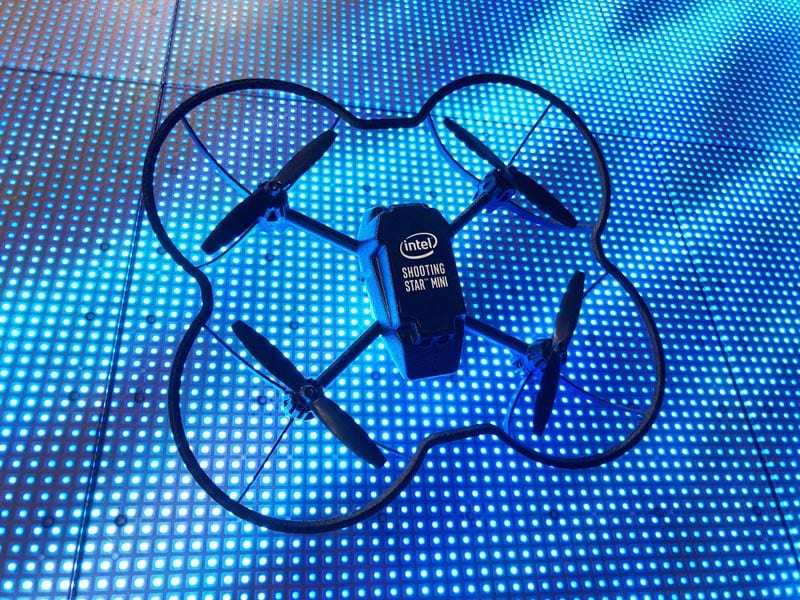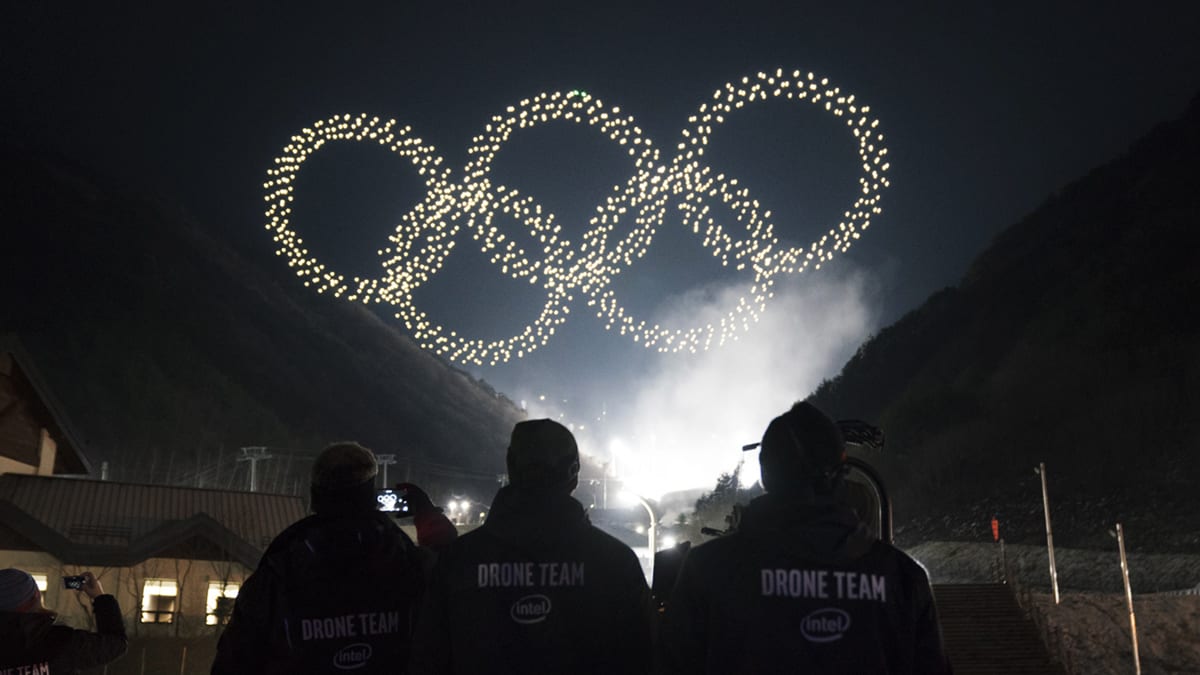Record-Breaking Intel Drone Swarm Lights Up Pyeongchang 2018
After Intel took CES2018 by storm with their drone light show last month, it was a sight to behold this new concept in entertainment make history at the Opening Ceremony of the Winter Olympic Games in Pyeongchang yesterday. Using over 1200 specially-designed drones, spectators were treated to a visual treat as they danced, maneuvered and illuminated the sky in the forms that included a giant snowboarder and of course the iconic five rings of the Olympic logo.
The drone light show was the pinnacle event showcase launching Intel’s long-term partnership with the Olympic Games that will continue until 2024. Intel’s involvement with the Olympic Games brings drone technology, VR (virtual reality) and 5G connectivity to the games in a bid to reimagine the future of the Games, creating a more immersive and exciting experience for spectators.
The choreographed performance made a big impact, but you might be surprised at the tiny size of the drones at its core. Built into a soft lightweight frame of flexible plastics and foam weighing only 280 grams, each purpose-built Intel Shooting Star Mini drones is equipped with an LED payload that can produce over 4 billion colour combinations. The animations are made possible through use of proprietary Intel software that allows a reference image to be uploaded, and then analysed by algorithms that calculate the optimum number of drones and the path for each drone to form the image as part of the swarm. Depending on the complexity of swarm animation requested, formation programming can take from days to weeks. Once programmed, the entire drone swarm can be controlled by only one pilot. Flights are generally from five to eight minutes in length, and have a range of 1.5km.

Intel CEO Brian Krzanich elaborated about the driving force behind Intel’s partnership with the Olympic Games at the Intel and IOC Press Conference, “The Olympics is is really synonymous with peak athletic performance, the pursuit of Excellence and and really the success of athletes in great competition and under adversity of all kinds. For Intel, similarly, we have always strived to bring the peak of technology, the peak of performance and really the pursuit of excellence around those technologies. We strive for that success in many of the same ways that athletes do in preparing for competition. And so for us it made great sense and it was a real symbiotic relationship to bring these two teams together to really usher in the new era of experiences fuelled by the technology for broadcasters, athletes, coaches and fans around the world.”
“The Olympics are a time when the sports and entertainment industries are buzzing with record-setting performances, so it was the perfect stage for Intel Shooting Star drones and our team to set their own kind of record,” said Intel’s “Queen of Drones” Natalie Cheung.
The new record exceeds Intel’s previous record of 500 swarm drones in Germany in 2016. However with local temperatures dipping as low as -11 degrees Celcius, the full 1200 strong swarm cohort did not perform live at the Opening Ceremony itself due to adverse conditions. As Anil Nanduri, Vice President of Intel’s drone group, explained to Wired, “Lithium-ion batteries and cold don’t really go together.” The performance was run successfully in December of last year, with tests in Finland allowing the tech team to finetune battery storage methods in order to mitigate damage that the cold might cause to the drone’s energy source. A smaller group of 300 drones were able to perform live on opening night however, and Intel plans to run additional live performances each night throughout the Games.
The Shooting Star Mini drones are not the only drones that will be present at the 2018 Winter Olympics. The Pyeongchang Olympics Anti-Terrorism and Safety Headquarters are introducing a range of measures including a specialist tactical drone with facial recognition capabilities. Intel will also have present at the games the Falcon 8+, in collaboration with a Drone Flight School. The Falcon 8+ is a professional level inspection and mapping drone made of a carbon fibre chassis, brushless motors and a patented V-shaped strut design. Designed to operate in sub-optimal conditions such as weak GPS signals and high winds, it has resistance to magnetic field disturbances and allows pilots to collect detailed geo-referenced, actionable data.



















